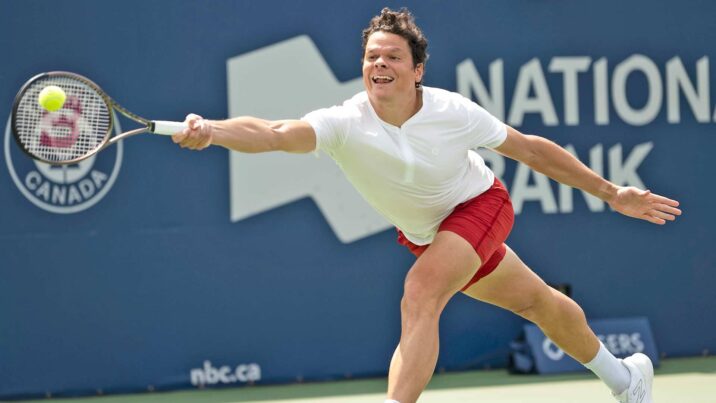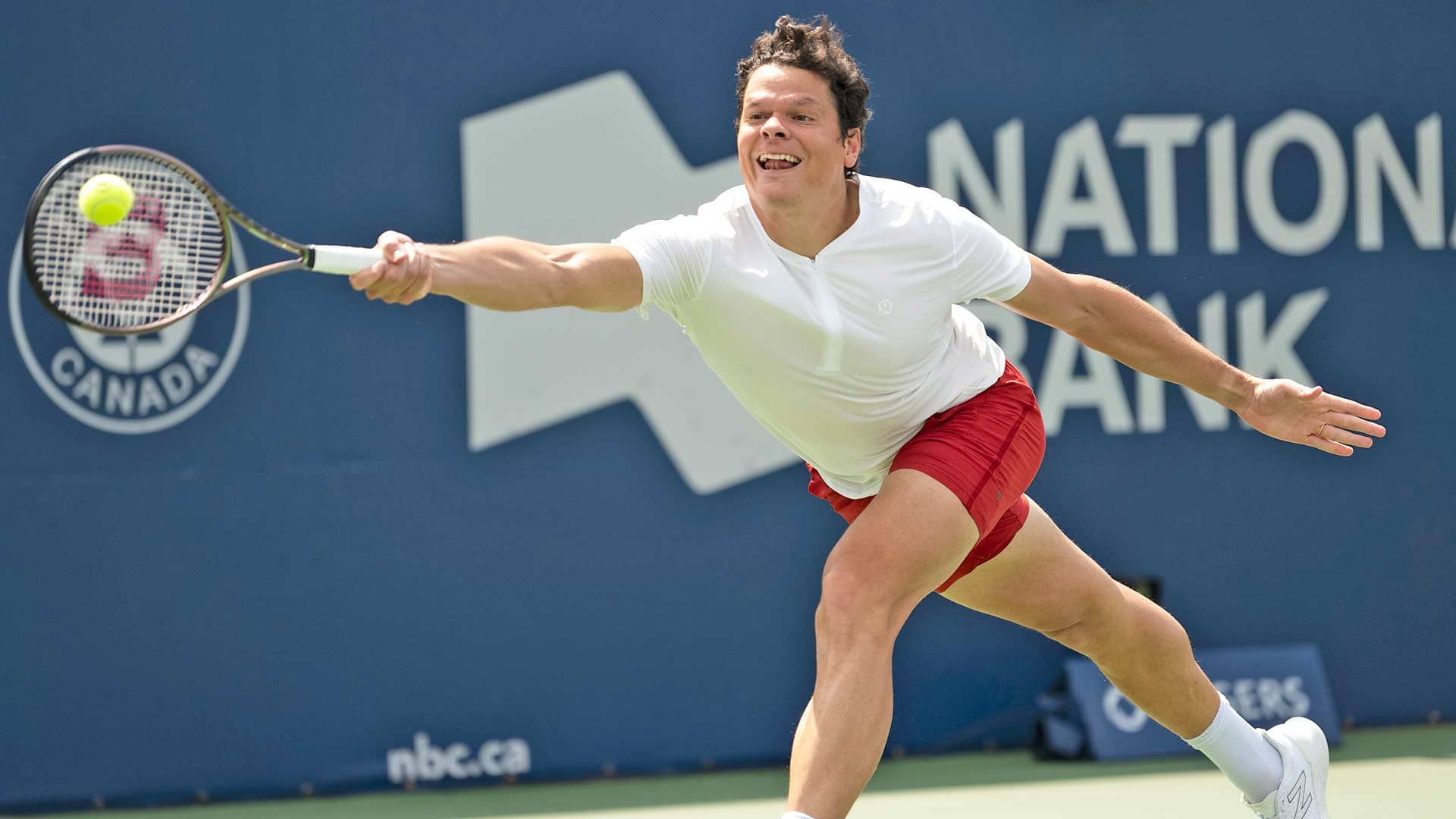
Milos Raonic has enjoyed a memorable start to his National Bank Open Presented by Rogers run, advancing to the third round at the Toronto ATP Masters 1000 event despite playing just four matches since the 2021 Atlanta Open.
In Florida, Raonic’s childhood coach Casey Curtis, who taught the Canadian from age eight through 17, has keenly followed along.
“I’m just obviously really happy for him. We’ve sort of stayed in touch over the last couple years and I know it’s been a tough grind for him,” Curtis told ATPTour.com. “I knew that he would show up ready to go. He’s not the kind of guy that’s going to try to play himself into shape. He’s going to make sure he’s ready to go before he gets out there and that’s sort of exactly what we’re seeing.”
After struggling with injury, the former No. 3 player in the Pepperstone ATP Rankings has quickly found his form to compete against some of the best players in the world and after defeating Frances Tiafoe and Taro Daniel, he is a win against Mackenzie McDonald away from making his first Masters 1000 quarter-final since the 2020 Rolex Paris Masters.
It is no surprise to Curtis, who has watched the 32-year-old’s game develop for nearly 25 years.
“He was eight years old and he was on the ball machine at 10 o’clock in the evening and back on again at 6 in the morning with his dad trying to start to get his game into shape so he could join the group that I had going,” Curtis said. “I was coaching him privately and they would work on the ball machine. That was [for] about three months or so. And then he improved quite a bit, but he really picked up his work ethic maybe around the age of 11,12, 13. And [then] I think he understood what it took.
“It wasn’t that he didn’t have the work ethic, I think he always did. But he started to become more aware of exactly the effort that he was going to have to put forth in order to achieve what he’s got now. And he was more than willing to do that once he understood that.”
Photo: Mike Lawrence/ATP Tour
According to Curtis, he worked with Raonic at Blackmore Tennis Club in Richmond Hill, which is a short drive from Sobeys Stadium. Club owner Terry Redvers would not charge them the court rate and they would arrive for 6 a.m. sessions.
“There are guys that will come out and you tell them, ‘Hey, this is what you really want to do if you want to try to improve your game and become a great player.’ And they’ll do it for a couple of weeks,” Curtis said. “If it’s something like getting up at 5 in the morning or 5:30 in the morning, they’ll think they’ve got it and they’ll show up for a couple of weeks. And then you don’t see them again for a while or at all.
“So Milos had that perseverance. He just kept coming and kept grinding and it’s why he’s where he’s at.”
It was under Curtis that Raonic’s devastating serve grew into the weapon it is today. Raonic began the tournament third in percentage of career service games won according to Infosys ATP Stats, trailing only Ivo Karlovic and John Isner. Part of the reason it became such a big stroke is that Curtis spent a lot of time focussing on it.
“I kind of felt he was going to be a tall guy because every guy in his family is tall. His father’s tall, his brother’s tall, his cousins and uncles are all tall. So there was a good chance Milos was also going to be tall,” Curtis said. “Pretty much everyone knows how important the serve is. But in particular, if you have a tall individual, I thought it was prudent to spend a lot of time on the serve.”
[ATP APP]
Curtis recalled a discussion he had with another coach, who asked him why he was spending hours upon hours harnessing the Canadian’s delivery.
“I said listen, I want this kid to average 15 aces a match. And if he can average 15 aces a match I think he’s got a good shot at being a top professional,” Curtis said. “He had 37 the other night and 15 today.”
Raonic is World No. 545, but he has certainly not played like it in front of his home fans in Toronto.
“He obviously wants to play. I mean, he wants to keep competing. And I think he can see that he’s obviously capable of playing at the highest level,” Curtis said. “You have to ask him where he thinks he’s going to get to, but nothing would surprise me. I’ll tell you, this guy, he’s one of the few guys that can beat the top one or two guys.”

